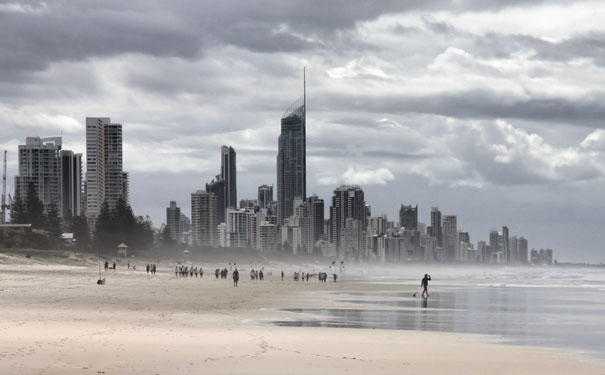
Image: Shutterstock
South East Australia has just experienced its wettest September on record, but the rains have done little to ease the long-term drought conditions.
Because it’s still the dry season in the tropics, September is usually the driest month in Australia. But this year Australia received nearly three times the normal amount of rain, with some areas receiving four times the average rainfall.
Dr Blair Trewin, a Senior Climatologist at the Bureau of Meteorology, says that this has been a very wet year for Australia. “Australia as a whole is currently tracking at the sixth wettest year on record at 30 per cent above normal. Quite a few of the northern areas are tracking very high [too, with] Northern Territory [experiencing its] second wettest on record, Queensland its fourth wettest on record and Murray Darling Basin its fourth wettest on record.”
Dr Trewin explains that the climate situation is currently perfect for higher rainfall in Eastern Australia. “We’ve got a well developed La Nina in the Central Pacific, with cool waters through the Central and Eastern Equatorial Pacific, getting down to two degrees below normal and that’s really an ideal set-up for increased Winter rains in much of Eastern Australia and also increased Spring rains.”
The increased rains are also being driven by a negative Indian Ocean Dipole, which also favours good rains. “The waters Northwest of Australia are warm and the waters in the tropical Indian oceans are cooler.”
The last time these conditions occurred together was in the 1970s. But in spite of the fact that this is the best year in Southeast Australia for a while, Dr Trewin says it “hasn’t been quite as extraordinary a year as a lot of people would think.”
Much of Southeast Australia is still below normal long term rainfall. Some of the areas of drought have disappeared, but there are still significant long term drought conditions present, such as the upper Murray Darling Basin in Southern Queensland.
Other parts of Australia have not received the high September rainfalls. Southwest Western Australia has recorded its driest year on record, with some areas receiving only half their normal rainfall.
Dr Trewin says: “Rains this year have removed a lot of the short-tern drought conditions in eastern Australia”¦ but the impact on the long term drought has been reasonably modest.”






